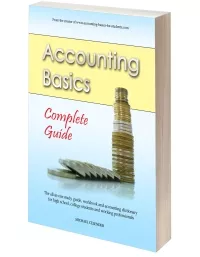Debtors Control Account &
Provision for Doubtful Debts
by David Wong
(Miri, Sarawak, Malaysia)
Q: Is the increase in the provision for doubtful debts included in the debtors control account?
A: Thanks for your question David.
I am sure there are a number of people who have not come across this accounting concept before or are a bit uncertain about it. So before I answer your question let me first go over and explain exactly what the provision for doubtful debts is.
The word provision comes from the Latin word providere. Pro- means ‘forward’ and videre means ‘to see’. So a provision is looking to the future, preparations made for the future or doing something with the future in mind.
In accounting, a provision is a future loss that will definitely occur but whose timing or amount is uncertain. We make an estimate of this future loss and record it as soon as we are sure it will occur.
The provision for doubtful debts is an estimate of the amount we will not receive from debtors in the coming year. In other words, an estimate of this future loss of incoming cash.
For example, if our debtors account (showing the amount owing to us) comes to $100,000 right now, and we expect 10% of these debts to not be paid, then our provision for doubtful debts will be set at $10,000 and the true value of our debtors will be $90,000.
Alright, so now that we've cleared up what the provision for doubtful debts is, let me answer your question:
From what I understand the provision for doubtful debts is not included directly in the debtors control account. Instead we have a T-account for debtors control and a separate T-account for the provision itself.
In our balance sheet we show the true value of our debtors - i.e. the net figure. For our example above, the balance sheet would show trade and other receivables (the common official term used for debtors) as $90,000. This figure would be obtained by setting off the provision for doubtful debts (with a credit balance of $10,000) against the debtors control account (with a debit balance of $100,000).
By the way, the provision for doubtful debts is also sometimes known as the provision for bad debts.
Comments for Debtors Control Account &
|
||
|
||
|
||
|
||
|
||
|
||
|
||
|
||
|
||
|
||
|
||
|
||
© Copyright 2009-2021 Michael Celender. All Rights Reserved.
Click here for Privacy Policy.



